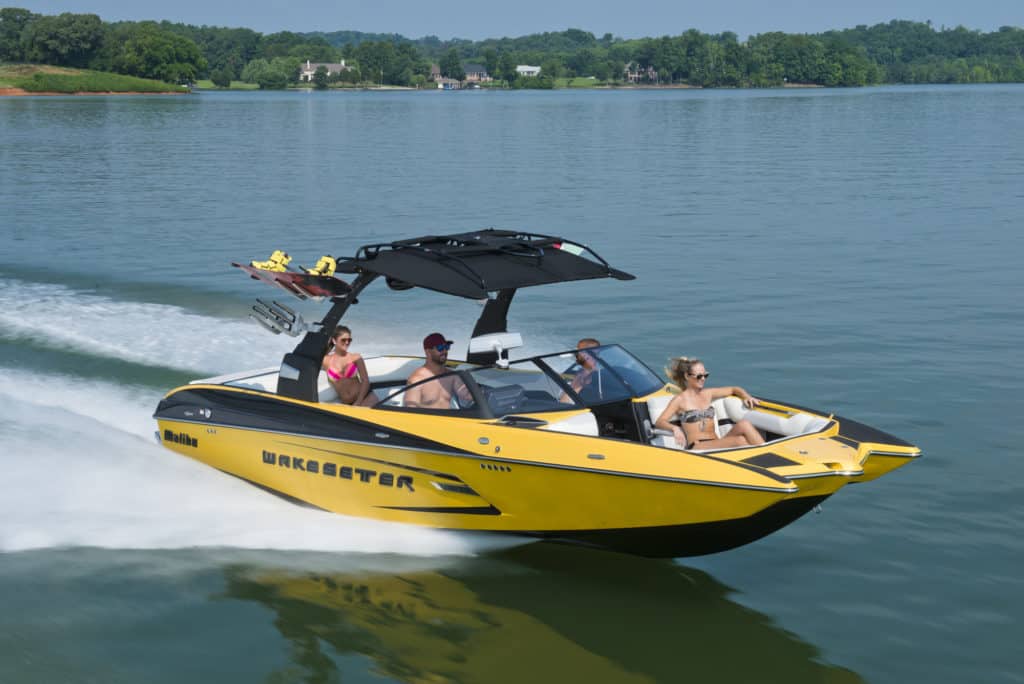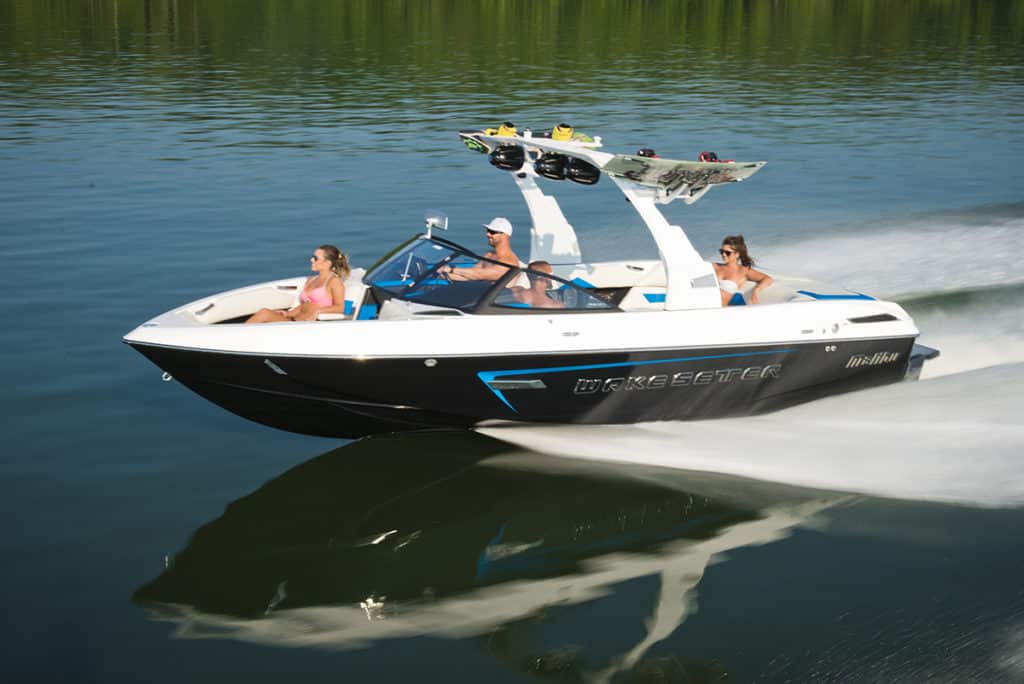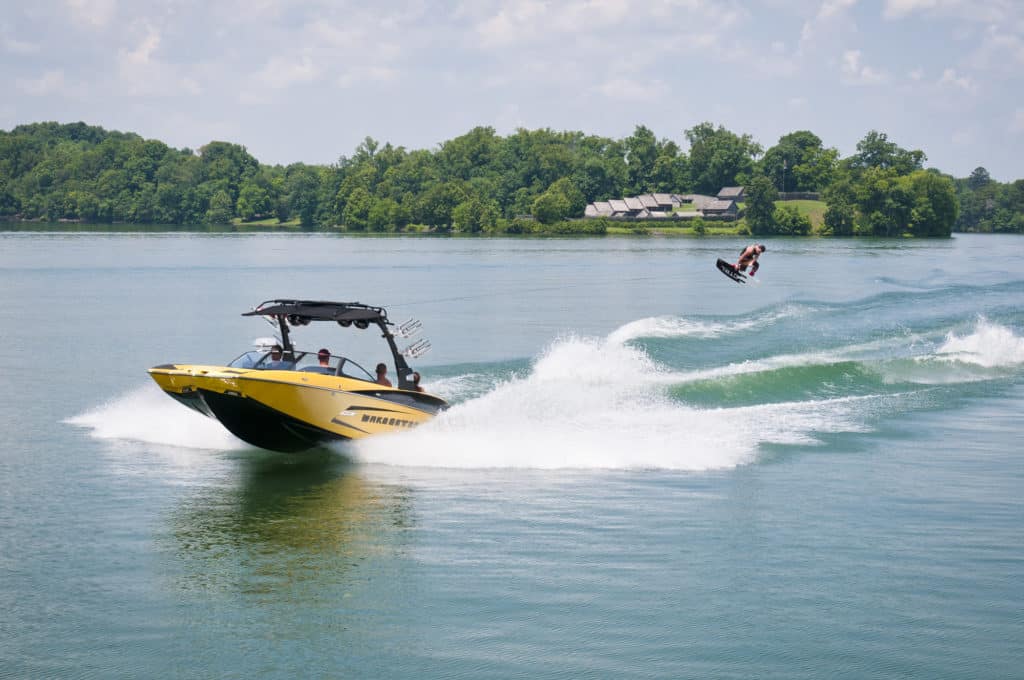


For decades, the inboard ski boat has been unapologetic in its singular focus. It’s made to deliver a solid, reliable pull and a small, flat wake, ideal for slalom skiers to cross without disrupting their line. Passengers? They’re welcome aboard…as long as they don’t mind a typically closed bow and a cumbersome engine box smack dab in the middle of the cockpit.
The V-Drive Revolution
By the 1990s, wakeboarders began to force a change in the equation. Rather than a tiny, flat wake, they demanded a big, monstrous launch ramp, all the better to boost them skyward en route to a dizzying array of aerial maneuvers. Weighted down with ballast and outfitted with raised tow sports towers, inboards initially proved up to the task, but it was a temporary solution at best. The real change in the market came with the introduction of the V-Drive, and bigger, larger models designed to let everyone join in on the fun.
As its name suggests, the V-drive maintains the prop and rudder approach of an inboard, but positions the engine in the back under seats or a sunpad…just like the average sterndrive runabout. The trick? That engine is essentially spun 180 degrees. It drives forward to a precision gearbox, where power is then redirected aft (picture that letter V) in classic inboard fashion. The most obvious benefit is no bulky engine box interrupting a large and spacious cockpit. The engine’s placement also naturally moves weight aft, building a better wake.
Manufacturers quickly took advantage of this V-drive revolution — and the desire to include more passengers in on the fun — by building upon a ski boat’s already impeccable construction and top-notch fit and finish. They widened beams, fashioned even more plush, richly appointed interiors, and ultimately, increased length to satisfy customer demand. Today, V-drive offerings have grown beyond typical ski boat territory to include 22’, 23’, and even 25’ models.
Simplicity In Design
Tempted to compare the V-drive to a sterndrive? Take a look below the waterline. A sterndrive relies on a large, heavy outdrive, a part that is tasked with not only propulsion, but also the added responsibilities of transmission, cooling, and steering. In contrast, a V-drive features a streamlined prop shaft, and positions a separate rudder directly in the prop’s slipstream. That rudder has greater range of motion than a sterndrive, giving a V-drive its unparalleled handling. The engine’s power is also transferred directly to the prop along a shallow shaft angle, meaning you’ll experience little power loss and minimal bowrise as your boat accelerates with the powerful torque skiers have enjoyed for decades.
A V-drive also typically draws far less water than a sterndrive, and tucks its prop well under the hull where it is safely out of the way of swimmers or boarders.
In fact, that prop placement is the primary reason why V-drives are the best and safest choice for the latest watersports craze — wakesurfing. With the ability to produce a monster wake, and dial it in from side to side through control of the onboard ballast tanks, the latest generation of V-drives are bringing ocean-like, surfable waves to lakes and rivers all across the country.
Your parent’s ski boat? Definitely not. But considering all the fun these boats make possible for the entire family, we’re pretty certain they’d approve.









